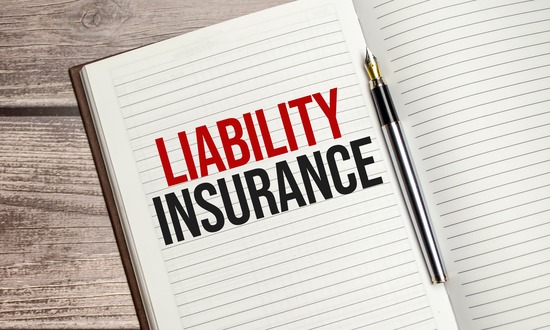When a building project is completed, it represents a significant investment of time, money, and resources. Unfortunately, not all projects end successfully. Architectural and engineering errors can result in defects that may compromise the safety, functionality, and aesthetic appeal of a structure. Such defects can lead to costly repairs, delays, and, in the worst-case scenario, legal action against the architects, engineers, and general contractors involved. Understanding the causes and consequences of these errors is crucial for professionals in the construction industry.
Common Architectural and Engineering Errors
1. Design Flaws
One of the most common issues arises from design flaws, where the architectural plans fail to meet the client’s needs or comply with building codes. Design flaws can include inadequate space planning, poor structural design, or improper material selection. For example, if an architect fails to consider the weight load on a building’s foundation, this oversight could lead to structural failure, necessitating costly repairs or even complete reconstruction.
2. Inaccurate Calculations
Engineers are responsible for ensuring that a building’s structural elements can support the intended loads. Errors in calculations can lead to significant problems, such as undersized beams, weak foundations, or inadequate reinforcement. A miscalculation in the load-bearing capacity of a floor, for example, can result in sagging or collapse, posing severe safety risks.
3. Poor Communication
Miscommunication between architects, engineers, and contractors can also lead to defects. If the architect’s design intent is not clearly conveyed to the engineer or contractor, critical details may be missed or misinterpreted. For instance, an architect might specify a particular type of material, but if this information is not clearly communicated, the contractor might use a cheaper, less durable alternative, leading to premature wear and potential failure.
4. Failure to Comply with Building Codes
Architects and engineers are expected to be familiar with and adhere to local, state, and federal building codes. Failure to comply with these regulations can result in a building that is unsafe or unusable. For instance, an engineer who neglects to design a building to withstand the local climate conditions, such as high winds or seismic activity, could be held liable if the structure fails under these conditions.
5. Inadequate Site Analysis
Before construction begins, architects and engineers must conduct a thorough site analysis to identify any potential issues that could affect the project. This includes evaluating soil conditions, drainage, and environmental factors. An inadequate site analysis can lead to problems such as foundation settlement, flooding, or environmental contamination, all of which can result in costly repairs and potential lawsuits.
Legal Consequences of Defective Construction
When architectural or engineering errors result in a defective building, the parties involved—architects, engineers, and general contractors—can face significant legal repercussions. The legal liability in such cases often hinges on the concept of negligence. If a court finds that the professional failed to exercise the standard of care expected in their field, they may be held liable for any resulting damages.
Architect Liability
Architects can be held liable if their design is found to be the primary cause of the defect. This includes situations where the design fails to meet building codes, is impractical to construct, or does not account for the client’s needs. In some cases, the architect may also be held liable for failing to oversee the construction process adequately, resulting in a building that does not adhere to the design specifications.
Engineer Liability
Engineers are responsible for ensuring that the building is structurally sound and meets all necessary safety standards. If an engineering error leads to a structural failure or other defect, the engineer may be held liable for negligence. This liability can extend to situations where the engineer’s calculations were incorrect, where they failed to consider important environmental factors, or where they provided inadequate supervision during construction.
General Contractor Liability
General contractors are responsible for the execution of the construction project according to the plans and specifications provided by the architect and engineer. If the contractor deviates from these plans or uses substandard materials, they may be held liable for any resulting defects. In some cases, contractors may also be held responsible if they fail to hire competent subcontractors or if they do not adequately supervise the construction process.
Preventing Liability Through Best Practices
To mitigate the risk of liability, architects, engineers, and contractors should adhere to industry best practices throughout the construction process. This includes:
- Thorough Documentation: Maintain detailed records of all communications, plans, and decisions made during the project. This can provide valuable evidence in the event of a dispute.
- Clear Communication: Ensure that all parties involved in the project fully understand the design intent and specifications. Regular meetings and updates can help prevent misunderstandings.
- Strict Adherence to Codes: Always comply with local, state, and federal building codes and standards. This includes staying updated on any changes to these regulations.
- Comprehensive Site Analysis: Conduct a thorough site analysis before beginning construction to identify any potential issues that could impact the project.
- Quality Control: Implement strict quality control measures to ensure that all work is completed according to the plans and specifications. This includes regular inspections and testing.
Insurance
Architectural and engineering errors can lead to significant consequences, including defective buildings, costly repairs, and legal battles. The ripple effect of these errors not only impacts the project but also places the architects, engineers, and general contractors at serious risk of liability. Recognizing the common causes of these errors and implementing best practices can help reduce these risks. However, even with the most diligent precautions, mistakes can still occur, and when they do, the financial and legal repercussions can be devastating.
For architects, securing Architect Liability Insurance is crucial. This specialized coverage protects against claims related to design flaws, failure to meet building codes, and other errors directly tied to the architectural plans. It ensures that your financial stability isn’t jeopardized by a lawsuit stemming from an oversight or miscommunication.
Engineers should consider Engineer Liability Insurance, which provides coverage for claims related to structural failures, miscalculations, and other engineering errors. Given the critical role engineers play in ensuring the safety and integrity of a building, this insurance is essential for protecting your business from the financial fallout of potential lawsuits.
For general contractors, General Contractor Liability Insurance offers protection against claims arising from construction defects, the use of substandard materials, or inadequate supervision. As the party responsible for executing the project according to the plans and specifications, having this insurance ensures that your business is covered against the unexpected, including errors made by subcontractors or other parties involved in the project.
In the high-stakes world of construction, where the smallest error can lead to substantial consequences, having the right insurance coverage is not just a safeguard—it’s a necessity. USA Business Insurance offers tailored liability insurance options for architects, engineers, and general contractors, ensuring that each professional is adequately protected. Don’t let an unforeseen mistake put your business at risk. Contact us today to get a quote and secure the coverage that best fits your needs.












